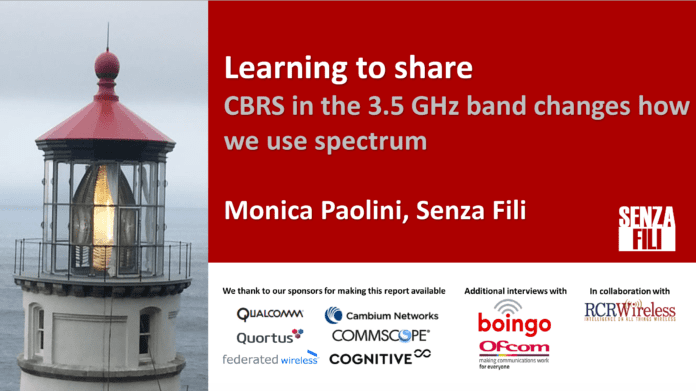A question often raised about CBRS concerns options in the unlicensed bands – namely Wi-Fi, LTE in unlicensed bands and MulteFire. Does CBRS compete with them, and if so, which one will win?
With the increase in traffic and the widening of applications that use wireless connectivity (e.g., IoT, IIoT and even fixed wireless to the home), operators, enterprises and individual users have to use multiple networks and technologies to get their connectivity needs met. Competition among technologies or bands is not the issue: as a society, we have shown that we can find a good use for all the spectrum that becomes available. The challenge is integration and coexistence among networks. Different networks can exist side by side, but separated – and this is what has happened with Wi-Fi and cellular in most environments. Yet there is value in integrating them and choosing which to use for any given application, based on the app’s requirements.
So the key question is not whether CBRS competes with Wi-Fi, LAA or MulteFire, but how they relate to each other, and which one is best suited for which use cases.
First of all, CBRS deployments are expected to use TDD LTE. However, that’s not a requirement, and other interfaces may be used, as long as they comply with the FCC regulation. There are vendors working on this. In WISP and private networks, non-LTE air interfaces can be deployed either for cost/performance reasons or to meet specific performance requirements driven, for instance, by IIoT services.
Wi-Fi could use the 3.5 GHz CBRS band, but so far there hasn’t been enough interest internationally to make that possible. The CBRS band is available for general access only in the US, and Wi-Fi uses only bands that are harmonized (i.e., available in most countries as unlicensed bands). In most countries, the 3.5 GH is a licensed band.
Furthermore, with the combination of the 2.4 GHz and 5 GHz bands, many Wi-Fi users have the capacity they need. If they want more, they can increase the frequency reuse by increasing the density of APs; they don’t need to create a new network in the 3.5 GHz band. CBRS will, however, attract those that use Wi-Fi heavily but can benefit from avoiding the congestion often found in unlicensed bands. Private networks, and IIoT and IoT networks, for example, can benefit from the higher protection against interference afforded by CBRS.
A similar argument can be made about LTE in unlicensed bands. In both 5 GHz and 3.5 GHz, the air interface is TDD LTE, but the coexistence requirements in the 5 GHz band force LAA to use a listen-before-talk mechanism to ensure fair access to all users. Listen-before-talk mechanisms enable multiple users – in the case of the 5 GHz band, Wi-Fi and LTE users primarily, but not exclusively – to share access in an unlicensed band, but require some overhead (the listening part), and that inevitably has a negative impact on performance. This is a price well worth paying in unlicensed bands, because it makes access highly flexible, which in turn results in high spectrum utilization.
In CBRS, however, fair access is ensured by the SAS, which allocates spectrum rights to the users. Listen-before-talk is neither required nor useful, because when the SAS allocates a channel to a user, that user has exclusive access to it for a certain period. During that time, transmission works as if it were licensed access. As a result, LTE in CBRS looks more like licensed LTE than unlicensed LTE. If LAA were used, it would make no difference; where there is a single user, LAA works the same way licensed LTE does (i.e., the listen-before-talk mechanisms are turned off). For both private networks and public access, CBRS provides a more controlled transmission environment than LAA, which is going to be attractive to many users.
Finally, MulteFire uses the LTE interface for stand-alone, often private, networks in the same 5 GHz band in which Wi-Fi and LAA operate. As a result, it is subject to the same listen-before-talk requirements. So MulteFire has no performance advantage over LTE. However, some CBRS users may prefer to use MulteFire rather than LTE, either because they find it easier to manage a MulteFire network or because they can integrate it with their existing MulteFire network in the 5 GHz band.
Rather than competition, CBRS offer the opportunity to expand the functionality and services offered by enterprise networks, including private, IoT and IIoT networks, as well as public access networks, especially small-cell ones. And by doing so, it encourages innovation with new players, business models and applications.
Download the report “Learning to share. CBRS in the 3.5 GHz band changes how we use spectrum”

